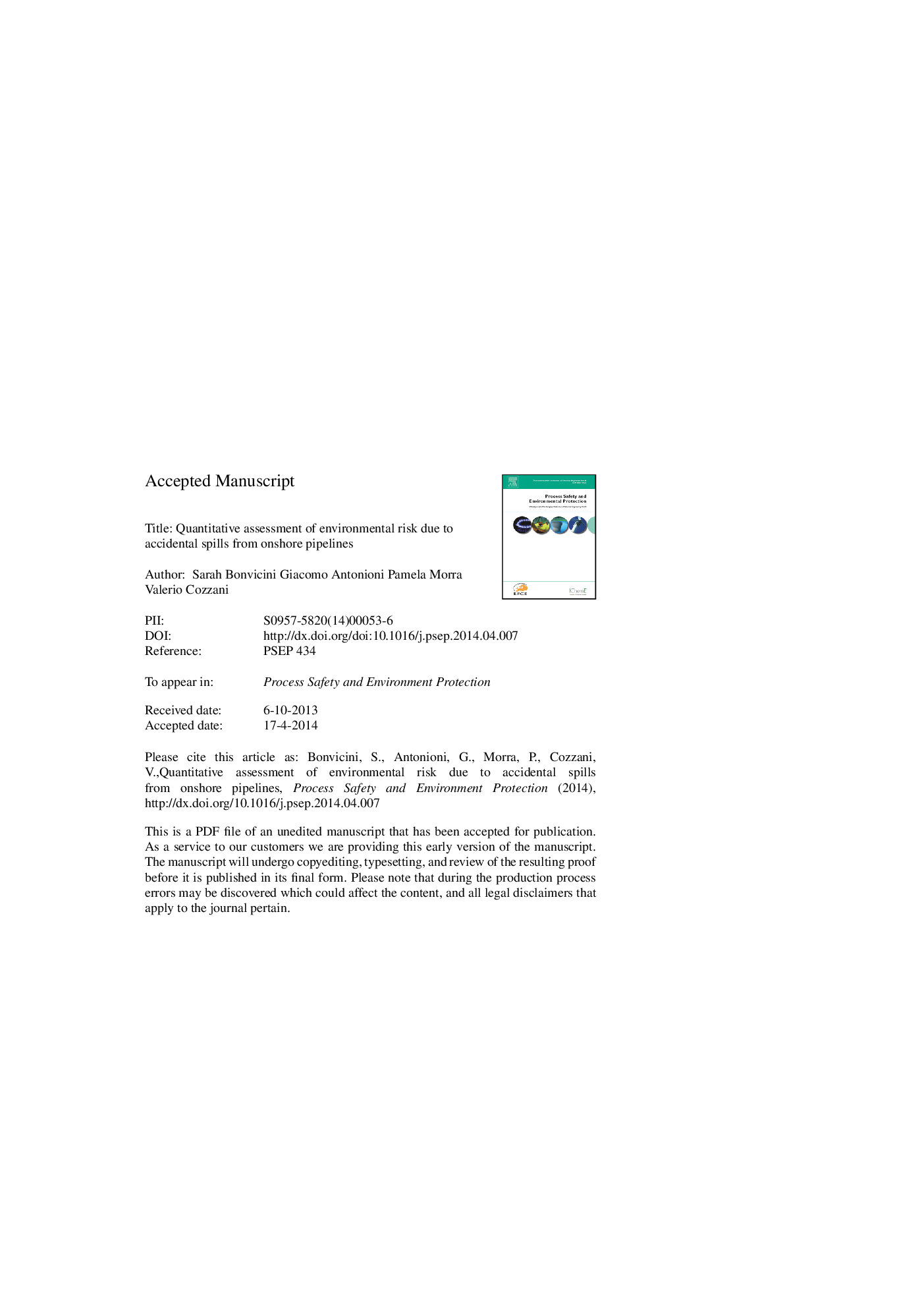| Article ID | Journal | Published Year | Pages | File Type |
|---|---|---|---|---|
| 6974577 | Process Safety and Environmental Protection | 2015 | 58 Pages |
Abstract
The transport of hazardous materials by pipeline is widely used for the transfer of significant quantities of oil and chemicals. Due to the extremely low frequency of spills, pipelines are considered the safest mode for the land transportation of hazardous substances. Accident records, while confirming that Loss of Containment (LOC) events are rare, also point out the major-accident hazard of pipelines, due to the extremely severe potential consequences of spills. Quantitative Risk Analysis (QRA) techniques have been applied to pipelines since many years with the aim of evaluating risk for workers or exposed population. However, releases of liquids, as oil and oil products, also create an hazard to the environment, due to the potential of extensive soil and groundwater contamination. An integrated model was developed for the environmental Risk Analysis of spills from pipelines. Specific environmental risk indexes were defined, expressing the risk of soil and groundwater contamination, both in physical and economic terms. A case-study is presented and discussed to illustrate the features of the methodology. The results confirmed that the proposed model may be considered an important tool within a comprehensive approach to the management of risk related to onshore pipelines.
Keywords
Related Topics
Physical Sciences and Engineering
Chemical Engineering
Chemical Health and Safety
Authors
Sarah Bonvicini, Giacomo Antonioni, Pamela Morra, Valerio Cozzani,
